#nitrosodium
Explore tagged Tumblr posts
Text
Upgrading the Shooting Part 4: Camera Shake and Bullet Spread
I was happy with the shooting system so far, but I think it could do with some more feedback when firing. It's a massive autocannon bolted into a tank, but it doesn't produce the sort of recoil a weapon like that would in real life. So, I brought back the camera shake system and had it play whenever the shooting script is triggered.
It's not super realistic for every bullet to hit exactly on target either, so I also added some code to add some randomness to the bullet spread.

Instead of using the FirstPersonCamera to get a direction reference, I made an Arrow component and used that as the starting point for the line traces. When the shooting event is triggered, the arrow is rotated up to 5 degrees. However, this would only make the bullets spread right of centre, so I added a random boolean attached to a Branch which makes the integer negative 50% of the time, using the same X - (X * 2) formula I applied for backwards movement.
youtube
The result is that the whole vehicle shakes a bit when you fire, and the bullets themselves spray out in a small arc. I am fairly happy with the shooting system now, so I may start work on enemies tomorrow.
#devlog#game development#gamedev#indiedev#indiegame#indiegamedev#nitrosodium#accessibility#youtube#Youtube
8 notes
·
View notes
Text
The Third Meeting

Today we planned out the list of things we will do in the four weeks we have to complete this game. My first task will be building a very basic map, which the programmer and artist can then work on.
#gamedev#indiegamedev#nitrosodium#indiedev#game development#indie game#indie games#indie dev#game design#mental health#mental heath awareness
7 notes
·
View notes
Text
Game Idea 1 - Metal Jungle
This idea is mostly based off my research into dungeon crawlers, and also the 'overgrown facility' aesthetic I briefly looked at. Essentially, you're a soldier stationed on some kind of colony, on a far-off planet. Something has gone terribly wrong and a mutagen has infested the facility, transforming the colonists into horrible monstrosities and spreading plant life all throughout the complex. Your goal will be to escape, getting through 100 rooms of the facility to reach some kind of escape pod or elevator that'll take you out.
It'll be procedurally generated, because (a) I want to explore that, and (b) there aren't many sci fi dungeon crawlers that don't focus on turn-based combat or some kind of extraction mechanic. I want to do a top down camera similar to The Binding of Isaac or Quasimorph, since I can do some cool tricks with the camera, such as obscuring the view with overhanging pipes or shrubbery. The procedural generation will be room-by-room, similar to SCP or PRESSURE - opening the exit door to each room will spawn a new cell into place, and then some variable will count the room numbers and spawn the exit room on room 100.
The player will be able to loot various supplies from lockers, like ammo or medkits. I might add some general resources, like scrap metal, which can be crafted into important items at a workbench or something similar. There might be side rooms which require lockpicks to open, or devices that can be hacked to give some other advantage. I am tempted to add a basic RPG system, where you can distribute some skill points when the game starts, or maybe choose from a variety of characters to play as, who would have their own advantages and disadvantages.
Combat-wise, the player will start with a gun, and maybe be able to upgrade it or find different weapons throughout the facility. They will encounter various sorts of mutants in the rooms, and I want there to be multiple ways to deal with the enemy encounters. You could try and avoid an enemy and sneak past without conflict, fight them head-on, or lure them into traps. There will probably be different types of mutants - maybe ones with ranged attacks, ones that can poison the player, and ones that attack in different ways like charging.
The main gameplay loop, besides progressing through the rooms, will be focused on resourcefulness. Loot from lockers and crates will be random, so the player will have to use what they have in creative ways to succeed. For example, they could get an explosive, and use it to kill an enemy. Or, they could hold onto that explosive and use it to blast open a storage room, containing more useful tools which they use to progress further and better arm themselves, and so on. You may get incredibly lucky and find rare or useful loot from a container early on, but if you don't think logically, you'll die quickly. I want the game to be sufficiently difficult so the player will probably die on their first attempt, but will be able to learn from their experiences and eventually conquer the facility. This, along with the procedurally-generated elements, adds replay value, as even if the player has already beaten the game, they can try again and their run will be entirely different.
I have also attached a mind map, to explain my ideas in a more concise way than the paragraphs above.

4 notes
·
View notes
Text
Playtesting Evidence
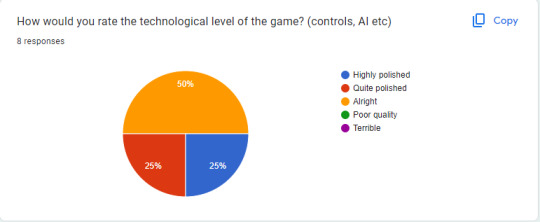
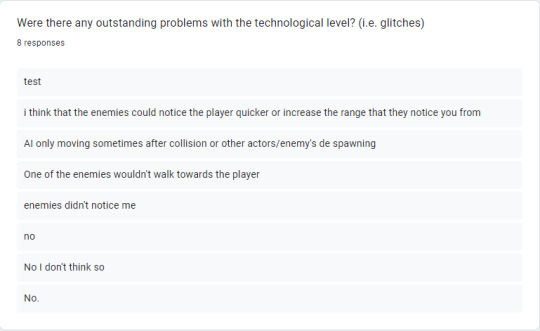


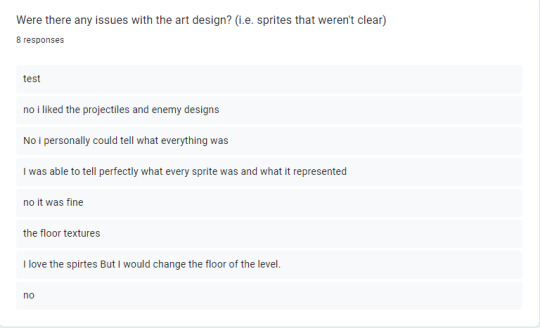
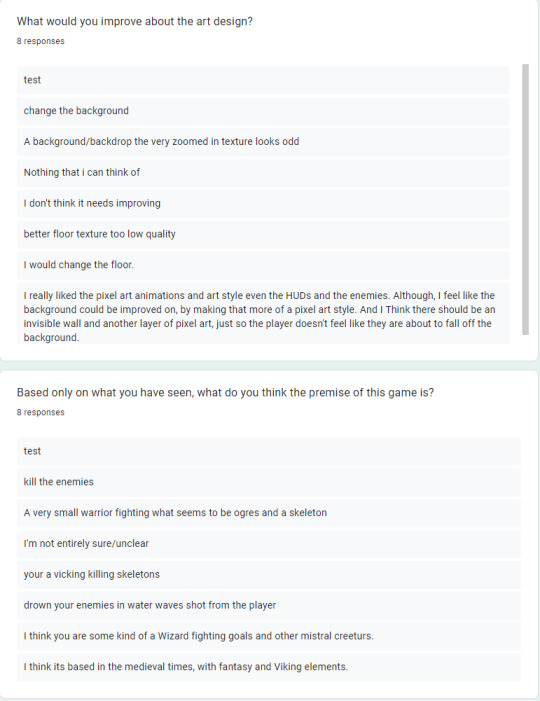

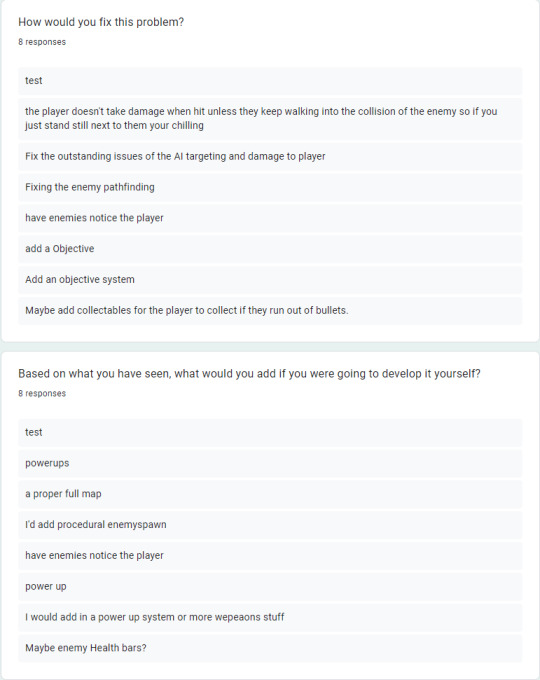

Today I will be going through my feedback from the playtest yesterday.
One thing that people continued to bring up was that the enemies would not notice the player. There is a reason for this that I brought up earlier: they do not have a 360 degree vision. In a full map, it would be less noticeable.
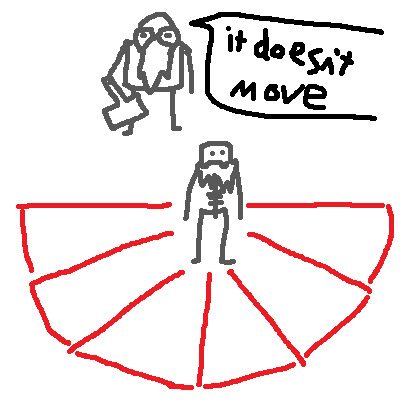
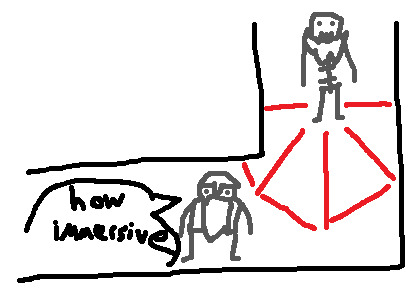
This is a basic sketch of the problem at hand. All the encounters will be hand-crafted so the enemies face what direction the player comes from. This also gives the player a chance to take side passages and come up behind unalerted enemies.
S - I will make a level conducive to the 180-degree view of the enemies.
M - Make a level that does not allow immersion-breaking blind spots.
A - I am going to be doing this anyway.
R - As said before, I am doing this anyway.
T - This will take the majority of my project time.
A lot of people also said I should change the floor texture to something less stretched-out. Obviously this is a placeholder but it is a quantative piece of feedback that I can improve on.
S - I will change the floor texture to something less stretched-out.
M - Create a basic sandy-coloured material in Unreal and apply it.
A - Assign time to create said material.
R - I was planning to eventually change the material anyway as it didn't fit the aesthetic.
T - This can probably be achieved within the day.
Another thing people said was that I should add proc-gen levels and enemies, but this is not applicable because I'm doing static level design. One piece of advice was to slow the enemies down, however. Because I plan to have different enemy types, some will be faster, but the standard enemy type should probably be a little slower.
S - I will make the standard enemy parent slower.
M - Change the walk speed from 600 to 500.
A - Very simple.
R - People will find the game easier if I make the enemies slower.
T - This will take a second.
9 notes
·
View notes
Text
Behold, a First Look at Nharro

For being a pretty key character in Sinister's story (without him being asleep, the story would not happen), I haven't touched on Nharro much. This is my first piece of concept art for the Spirit King himself. I actually put a lot of thought into his design - much like the rest of Sinister, it doesn't look weird to look weird, it all has a purpose. Firstly, notice his pose, left hand raised upwards. (Left hand is noted because the word sinister means left-handed in Latin). This pose has been used, in some capacity, in Hinduism art, especially of the god Shiva.

Note the lower right (Shiva's right, at least) facing palm-outward to the viewer. Shiva is regarded as a god of both creation and destruction within Hinduism, and this parallels Nharro as the ruler of limbo, a realm between life and death. I've thought about this a lot and incorporated it into his design - not only is Nharro very symmetrical, but most things in his design are in groups of two, five and ten. I was thinking about how to represent the soul without connecting it to any specific religion (even my look into Hinduism was surface-level). What makes the human being different from any other animal (assuming animals do not have souls)? Our intelligence? But animals like dolphins are just as smart. Our genes? Perhaps, but we share nearly 99% of that with pigs and apes. I would like to point to the thing that has let us survive as a species: hands, specifically, five digits and opposable thumbs to allow us to master the tool. We have two hands, five digits on each, and ten across both. Look closer at Nharro's design if you haven't already - each curling line, each pattern of dots, practically everything comes back to that theme of two, five and ten.
You may have also noticed the pocketwatch tied to Nharro's ring finger by a chain. This is so he can count the lifetimes of the many souls entering his domain, but it also represents the mechanical aspects of Nharro's realm, the gears and moving parts. To him, the cycle of life and death is the perfect machine, multiple components (decay, growth, et cetera) working together. However, as Nharro's mind spirals into unconsciousness, so does the underworld. The immaculate order is gone, warped; gears now spin independent of any drive shafts or machinery, no longer obeying laws of friction nor thermodynamics. Warehouses of perfectly-ordered containers are now strewn in absurd patterns, stacked to the ceilings for no logical reason. The rusted hulks of boats pile up in the harbor, the carcasses of a once-orderly fleet of limbo-faring ferries. No wonder the Shipwright went mad.
Now let's look at Nharro's subordinates, the skeletons at his sides. They are dressed in cloaks; an idealistic artistic representation of a Grave Digger's garb, no longer torn apart by the ravages of time. The leftmost (our left this time, confusing I know) skeleton is carrying a spade, indicating that this one would fill the role of Grave Digger. Nharro has his hand rested on its skull; an act of affirmation to who are essentially his children. The other skeleton is carrying a large tome, and while it is not visible in the image, some messages in Latin are written.
Nharro spiritus est rex terram inter vitam et mortem.
Dominus maris in quem omnia flumina influunt.
Manes ad milites, sepulchra ad sutores, cryptas ad urbes.
Mortis in visione vitae.
I chose Latin because, beyond it being the go-to language for writing interesting messages without creating a conlang, it also contains the root of the word Sinister, as previously mentioned. The messages translate roughly to:
Nharro is the spirit king of the land between life and death.
Lord of the ocean into which all rivers flow.
Ghosts unto soldiers, tombstones unto cobbles, crypts unto cities.
Death in the visage of life.
Beyond being a nice bit of purple prose to fill the artwork, it describes my idea of Nharro and the wider afterlife quite well. The "ocean into which all rivers flow" is a metaphor I've wanted to use for a while in conjunction with Sinister - the afterlife's geography is very ocean-heavy, and the sea has always been a source of mysticism, from sirens and sea monsters to the supernatural implications of Davy Jones' Locker, and the various disappearances of ships throughout the ages. Plus, if you think back to the idea of Nharro loving the perfect cycles of life and death, look at the water cycle. Water begins in rivers and flows to the ocean, where it is "reincarnated" via evaporation. Sinister has you die over and over, and where do you evaporate, or respawn from, each time? The harbor. The ocean. My plan for traveling between levels has you on a boat - you're on your own water cycle in that sense. And what of "tombstones unto cobbles, crypts unto cities"?. Obviously this is a resting place functionally, but look at the level architecture. Everything is built out of gigantic pieces of stone, as if the afterlife was literally built out of ancient tomb remnants.
The artwork on the book is also related; though it's basically incomprehensible in the image I took. The first one is an ornate skull at the bottom of the first page, which doesn't have any meaning, but it's in line with the rest of the art design for the drawing. The next one represents a group of skeletons in a boat, crossing a stormy sea. This obviously relates to souls entering the afterlife by boat; the imagery originally comes from Charon and his ferry in Greek mythology, but it's also how souls canonically arrive to Nharro's realm in-game. The third image shows four buildings, standing tall. However, the remains of four skeletons are entombed within, making the skyscrapers appear more like sarcophagi. This relates to that line "crypts unto cities", on a more metaphorical level.
On Nharro's actual physical shape, I borrowed a lot from Moon Lord from Terraria.
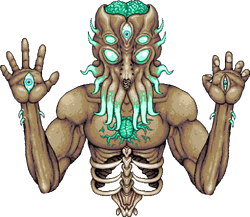
The irregular head shape with multiple eyes, visible ribcage, and torso that tapers off is a very striking design, and something I have tried to mirror with Nharro. Obviously, his emaciated look comes from him being the god of death; of course he looks like a wizened corpse. Nharro's head was the first thing I designed of his character actually; I couldn't tell you what it properly represents, but it does somewhat resemble a coffin. If you look closely, a leering skull is visible in the centre, and this pattern is mirrored if you look at it upside-down, once more bringing things back to the themes of two, five and ten. In retrospect, it also looks very phallic, but given that sex is a key part of the life-death cycle (leading into birth obviously), it does still relate. Truthfully, it was an interestingly curved symmetrical pattern I could easily draw. Maybe it's different for everyone who looks at it. That is the key part of the project, after all. One thing can appear to be one outcome, and end up being another entirely. Nothing is as it seems. I think the Spirit King emulates that quite well.
(I am also aware that the name "Spirit King" is used by various characters, but it isn't Nharro's official title anyway).
I plan to have this drawing as a texture on a massive wall in the second level of Sinister, perhaps in some sort of church so I can lean into the more Gothic and fantastical elements of the art style. I could even make it transparent somehow and put it on a stained-glass window; now that would be cool. I have put masses of thought into this design, and so I really want to implement it somehow. I'd hate for all this effort to go to a character you don't even see.
12 notes
·
View notes
Text
Tying Up Loose Ends (and a massive dive into how my mind works in game design)
There's basically one more thing I need to do for the project: create a marquee on PhotoShop. Otherwise, it's finished. Debriefs have been filled in, research processes outlined, files zipped and assignments sent off. My game is ready to be packaged and put on an arcade machine, and it'll run right out of the box. I obviously don't want to come off as prideful, but I think a finished game on this project is something special. At the very least, a polished game - not something that, yeah, it plays, but it's glitchy and scraped together just in time for the deadline. A game where I set out to do a thing and succeeded in considerable capacity. Toxic Waters was a good game, but it wasn't perfect. It was my first proper Unreal project and I overshot what I thought I could accomplish - multiple enemy types, combat with various unique weapons, large non-linear levels, advanced puzzle mechanics and an in-game shop had to be cut. Overdeath was a fine idea with an admittedly bad prototype level attached to it. The core gameplay loop was yet to be implemented, and the final "game" was a mess of poor time allocation and unused assets sitting unseen beneath the Z-kill. Sweat Pursuit could've been this. Another case of NitroSodium thinking he could make something that, in truth, was far above his skill level. But I did it!
I think I've mentioned this before, but this project was more about functionality than immersion. With Toxic Waters, I had a whole world envisioned; the Hydromorph Research Complex, a flooded scientific facility of snaking pipes and wailing sirens. The game was chunky and mechanical, a fine-tuned set of systems waiting to be utilized by the player to escape. With Overdeath, I wanted to create a wacky, vibrant homage to games like Serious Sam, where every shot fired has some effect to the world, blasting apart boxes or inflating them to double size. The key was always Create an experience, but after Overdeath failed to be interesting nor playable, the focus shifted to Make a game, specifically because Sweat Pursuit relies entirely upon its mechanics. Blog-wise, there were no walls of text debating on what weapon would be thematically relevant a la Toxic Waters, no collages of frozen outposts and junked snowcats like in Overdeath. All my thoughts were on the functionality of Sweat Pursuit, because without it, the whole thing collapses. I don't like making games like that. I much prefer the artistic merits of game creation; designing worlds and coming up with interesting ways the player can interact with them. For my next project, the looming, ominous FMP, I want to go back to that Toxic Waters era of design. I want to flesh out a world and build it so that a player can move through it, use all the moving elements that make it tick, jump on its platforms and exist in this deeply-stylized stratification of a real place.
I think the FMP is about lottery tickets? But obviously that'd be altered somehow to fit an idea. Right now I have no clue what I'll do for it. I've got something like three months though, far longer than my other projects, and I am a little intimidated by it. I mean, we're given a whole week for our teachers to explain it. How complex is it gonna be? I think I can add a second pillar to my gamedev formula.
I: Create the bare minimum before everything else. A game needs to be playable and functional as a concept before any more work is done.
II: Doubt is your biggest impediment. Having a solid idea to build off on is key to starting your project correctly.
I think for the rest of this week I'll be relaxed. Today I did crunch pretty hard. As my friends would say, I locked in. Headphones up, Deus Ex Area 51 Combat breakbeat blasting in my ears, not talking to anyone until my evaluations were done. But tomorrow, I'll do a little relaxing PhotoShop work, release my grip on the tight ball of stress that has been the Equilibrium Project for the last month, recuperate and prepare myself for whatever comes next. It's nice to word-vomit like this at the end of the project, archive the various thoughts that played in my head on loop as I connected nodes and playtested, but could never be fit into the work schedule. I'm ready to try something else. To utilise my new ideas and programming knowledge in a brand new, interesting way.
2 notes
·
View notes
Text
~Quick message to followers~
I'm moving to a new blog, so if you want to continue to see my games develop, please go to NitroSodium's Epic FPS.
1 note
·
View note
Text
Making Enemies

I did most of this on Friday, but I'm posting it now because I couldn't send the image of my notebook to myself at college. These are eight enemy designs I have come up with.
The Hell Bat is a fairly simple creature - two wings, a tail, and a big cyclopean eye in the centre of the skull. Gameplay-wise it would be a 'horde' enemy, low health but high speed, and rushing you in packs. I was inspired by the Cacodemon from Doom, but I wanted to make it clearer that it was flying, so I added the bat inspirations.
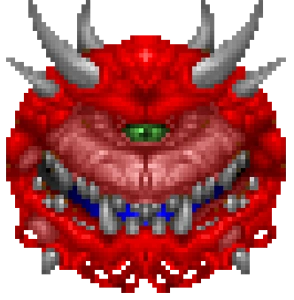
The Scorpion is the same school of thought as the Hell Bat, but in insect form. It would fill the same gameplay position as the Bat, but just be a ground variant. It is somewhat redundant, however. I was a little inspired by the Brains from Hero Factory Brain Attack, a staple game of my childhood.

The "Orcoid", or what I would eventually just call an Orc internally, is meant to be the stock enemy type which would be encountered the most frequently. Orcs are a classically evil race in fantasy, so I figured it would make sense - but I also wanted to explore why they are evil. I also gave them a helmet resembling the Roman style, with the mohawk-like crest on top; and a javelin for a weapon to continue the theme. In fantasy settings you often get races being "coded", meaning they are based on real-world cultures, and something I don't see much of is Roman-coded orcs. Consider that the ancient Romans were expansionist, militaristic, and fairly brutal when you get down to it; all traditionally orcish qualities.
The Bone Giant is what I had planned to either be a very large enemy or the boss of the game. The reanimated skeleton of a giant, clad in the rusted remains of centuries-old armour, and holding a blade the size of a tree trunk. Lore-wise I had the idea that the Giants were employed by heaven to construct the Crucible, somewhat like the giants building Valhalla in Norse and Germanic myth. The forces of evil are then bringing their corpses back to life, to serve them. The actual design of a skeleton in rags is akin to the enemies in Sinister, which I didn't actually mean to invoke, but apparently did so anyway.
The "Glutton Orc" was another idea for a heavy yet slow enemy, but this one was decidedly less threatening. A morbidly obese creature dressed in nothing but a loincloth, brandishing a comically oversized femur bone. I was averse to this design for a few reasons, but one was that I already had an Orc enemy in the game, and I was going for variety above all else. The general shape was inspired by the boss Prince Chan from Serious Sam 2, but more orcish.

The Lizardman was going to be what I had called in my notes a "shock trooper" enemy; fast, tanky and damaging all in one. They'd show up infrequently as a sort of mini-boss, forcing the player to prioritise or die. Lore-wise I wanted them to be the captains of the evil army, commanding small squadrons of orcs. To explain their high defence and also hint to their higher rank, I gave them visibly better armour and a shield. Their look was inspired by the Lizardmen from Fear and Hunger, who can notably block attacks with their shields, and will skin you alive upon a game over.

The Rock Elemental was another tank enemy, but I also wanted this one to be a bit of a surprise for the player. Their idle sprite would be a big pile of rocks, the same as would appear inert in other parts of the map. But as soon as you got close, it would rise up as a golem and begin chasing you. My inspiration for this was a very old game called Bionicle: Quest for the Toa. As a kid, I remember going into the Onu-Koro section (caverns) and facing boulder monsters that formed out of rubble mounds.
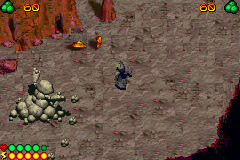
Finally I designed Dark Dwarves. These would be identical to the dwarf sprite, but dark. The original Norse dwarves, mostly called dvergr (which interestingly also means dark elves) were black like coal, and were associated with maggots and other rotting things. In the Norse creation myth, the gods used various body parts of the titan Ymir to create Earth, and the dwarves were made from the maggots festering in his corpse. My thought is that they'd be either a rival dwarven faction, or the corrupted remains of the original craftsmen.
Because I didn't want to make loads of sprites, and also have redundant enemies in the game, I asked people what designs they thought were best, and what they thought were worst. I wanted them to form opinions very quickly, as that is how players would respond - they would swiftly end the encounter, by killing or being killed, and then they would judge on what they thought of it. Immediately people disliked the Scorpion as it was uninteresting, but very much liked the Lizardman. The other enemies were given middling opinions. Notably, the Bone Giant was derided as a generic enemy, but I think when sized up to a giant stature, it will be more unique. It's just harder to judge from a 2d image. In the end I chose five enemies: the Hell Bat as a rusher (high speed, low health, low damage), the Orc as stock (medium speed, health, damage), the Lizardman as a shock troop (high speed, medium health, high damage), the Rock Elemental as a tank (low speed, high health, high damage), and the Bone Giant as a boss (low speed, super high health, super high damage).



I did not manage to make the Lizardman or Elemental sprites on Friday, and as I do not have PhotoShop at home, I cannot make any more until Wednesday.
7 notes
·
View notes
Text
Finding Materials: The Vines

For the vines, I found a model pack on Fab/Quixel that contains nine different models of creepers, ivy, et cetera. Applying the materials was a little different this time since I needed to make them translucent, otherwise they would stretch.
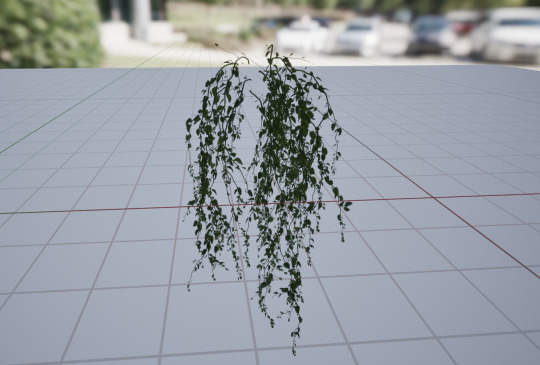
This is what the first vine model looks like in the static mesh viewer.

And this is what they look like in the game. I'm actually surprised how much they change the vibe of the room - if you ignore the big cartoony capsules, which are unchanged, the overgrown wall and pipe actually looks somewhat realistic, or at least like a realistic game. I'm definitely going to continue with this aesthetic when I go into refinement for next week.
3 notes
·
View notes
Text
Making the Test Map

I built this quickly, just to test how the game would actually play when finished. Its not indicative of how I want the final to look, and it is fairly rough around the edges, but that's not too much of a problem. The player spawns in the red-lit hangar, and progresses through two yards of enemies, while collecting items from a few crates. The first yard has mostly Shooters and one Rammer, while the next yard has a mix of Shooters, Kamikazes and Rocketeers. One problem I've found is that the enemies can't see the player across some of the longer distances, and the player's autocannon can't actually reach some of them. So for the playtest, I will increase the range of both.
youtube
I deleted the Sky Atmosphere, and this gave it a harsh, almost apocalyptic feel. It definitely feels like you're in a warzone of some kind, but I'm not sure if I'll keep this grimier aesthetic for the final game. I don't know how well it gels with the vehicle designs.
3 notes
·
View notes
Text
The Missile Problem

I managed to create a missile projectile - just a copy of the BP_FirstPersonProjectile with a cylinder and cone to make it actually resemble a rocket. The problem is, it has no collision for some reason and goes through everything.

It's supposed to destroy on contact with anything, and I can't understand why it's not. Otherwise, the code works well.
4 notes
·
View notes
Text
Making a New Firing System

This code is for the missile firing, which uses a new input action. I made a new Arrow for spawning in the missiles, and also a new flipbook over the left cannon to light up when it shoots. I also made a MissileAmmo variable that decreases with each shot, so you can't spam it like the autocannon.

As you can see, the missile counter is displayed below the health, and I made a crosshair to help with aiming.
3 notes
·
View notes
Text
Clearing up the Model Textures
For the sake of simplicity, I am reimporting the textures used on the tanks. When you import an object in Maya, it also imports all of its textures - every single instance, per object. So I currently have about six identical blue metal textures each called pasted_pasted_pasted_lambert14 or pasted_lambert16 and it makes looking for the texture you want impossible. So, I will make a 'universal textures' folder to draw from when I want to texture them, and delete the ones currently in their model folders.
I learned the importance of good file allocation in the last project. Before then, I usually just let my assets pile up in the Content Drawer, and would fish them out when needed. But it's not an efficient way of doing things. Neither is having a slew of indistinguishable textures.

I did the Kamikaze first to see if it worked. Of course when I first deleted the Lambert textures, it went greyscale, but I went to the model editor itself and reapplied it with the new copies of the textures. This prevents me from having to retexture it each time I want to place a new copy into the world, as I did with some objects in the FMP last year.
3 notes
·
View notes
Text
Making a Base Tank Design
(I have drawn some basic ideas, but I cannot attach them until I get home.)

I have created a basic vehicle design that can be augmented with different components based on what role it plays in the game - shooter, rocketeer, rammer or kamikaze. Because this is done in Maya and texturing isn't as in-depth as Unreal, I have just given it some stock images to add a bit of detail while these ideas are in the test phase. To make more, I will just copy the base file and edit that one, so I still have the base design to work from.

The sloping mudguards on the front were somewhat inspired by the Rhino tank from Warhammer 40K, which itself was probably inspired by various real-world tank designs. However, I wanted to make it a little more interesting, so I made the whole thing very flat with a translucent viewport on the front. I am tempted to ditch the AI/remotely controlled idea and just make these regular vehicles with pilots, mostly because I want every vehicle to have voicelines like in Command and Conquer.
3 notes
·
View notes
Text
Making Extras
This is a quick blog post to detail all the small sprites I've made for minor things in the game.




These are the different types of brick: white, blue, green and red.

Health potion.

Crystal ammo for the hammer.

The honor icon, for the score.

Here's how some of these appear in game.
5 notes
·
View notes
Text
Fixing the Elevator

To see what was going wrong with the code, I unplugged the elevator movement code and replaced it with Print Strings. Curiously, only the Activate was triggering.

So I placed a button into the level, not connected to the elevator, and redid some of the pins. I found out that the code was essentially stuck in a loop of triggering the Activate, and the Deactivate couldn't actually be triggered. I fixed it, and now it looks like this.

I reconnected everything and it was still broken in the same way. It was then that I realised that if the button gets clicked while the elevator is moving, it will switch between Activate and Deactivate, and thus trigger the wrong event when the elevator arrives. In simple terms, you hit the button once and it runs the Activate code, which sends the elevator up. You hit the button again and it runs the Deactivate code, but nothing happens because the elevator is in motion. When it arrives, you hit the button and it plays the Activate code, which will of course set the elevator's position back down. The solution here will be to have a single Elevator Move event, which then uses a Boolean to see what level it is on, and move accordingly.

This is the code now, and it works perfectly. Here's a video.
youtube
The elevator goes up and down smoothly, and it can transport robots on it, though it looks like sometimes they can have some problems disembarking once it reaches the destination. That can be fixed with level design (i.e. a ramp to the elevator), but the main thing is that it all works mechanically.
6 notes
·
View notes